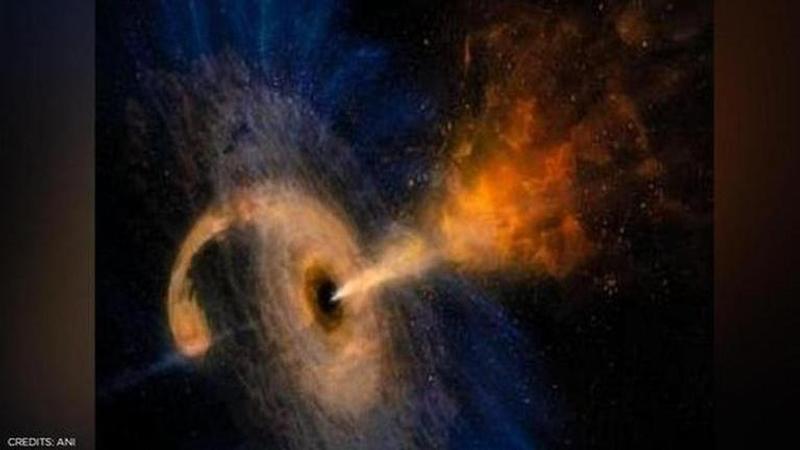Published 11:43 IST, July 28th 2021
NASA's Fermi spots pulse of Supernova's high-energy radiation racing towards Earth
The phenomenon detected by NASA's Fermi Gamma-ray Space Telescope is one of the shortest GRBs produced by the death of a star, lasting for less than a second.

In a magnificent discovery, NASA spotted the shortest gamma-ray-burst (GRB) events in history after it detected energetic rays from a collapsing star racing towards the earth. The phenomenon detected by NASA's Fermi Gamma-ray Space Telescope was spotted on August 26, 2020, and is one of the shortest GRBs produced by the death of a massive star, lasting for less than a second.
According to Bin-bin Zhang at Nanjing University in China and the University of Nevada, Las Vegas, this event had shown that dying stars can also produce short bursts. Short GRBs are often produced when pairs of compact objects – such as neutron stars – spiral inward over billions of years and collide, as per NASA.
“This burst is special because it is definitely a short-duration GRB, but its other properties point to its origin from a collapsing star. Now we know dying stars can produce short bursts, too," he said.
Tomás Ahumada, a doctoral student at the University of Maryland, College Park, and NASA’s Goddard Space Flight Center in Greenbelt, Maryland noted that the burst emitted 14 million times the energy released by the entire Milky Way galaxy over the same amount of time. This made it one of the most energetic short-duration GRBs ever seen.
Named GRB 200826A the event has been recorded as a sharp blast of high-energy emission lasting just 0.65 seconds. After travelling for a significant period of time through the expanding universe, the signal was detected by Fermi’s Gamma-ray Burst Monitor. It appeared in instruments aboard NASA’s Wind mission, Mars Odyssey, and ESA’s (the European Space Agency’s) INTEGRAL satellite as well.
How is a GRB produced?
According to NASA, when a star much more massive than the Sun runs out of fuel, its core collapses and forms a black hole. As matter swirls toward the black hole, some of it escapes in the form of two powerful jets that rush outward at almost the speed of light in opposite directions. Each jet drills through the star, producing a pulse of gamma rays which are the highest-energy form of light, lasting up to minutes. A GRB is detected when one of these jets happens to point almost directly toward Earth. Following the burst, the disrupted star expands as a supernova. A short GRB often lasts for less than two seconds, while a long GRB is anything over 2 seconds.
Updated 11:43 IST, July 28th 2021



